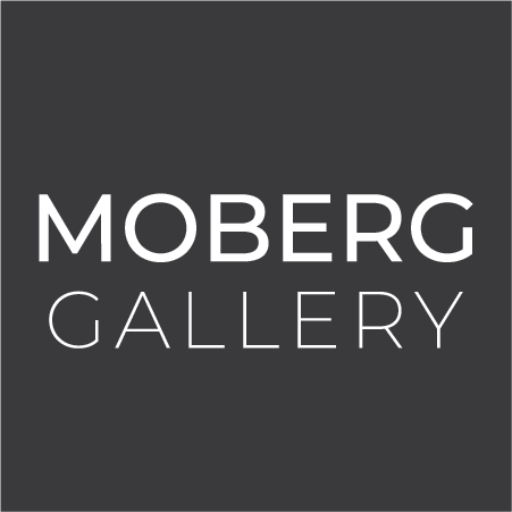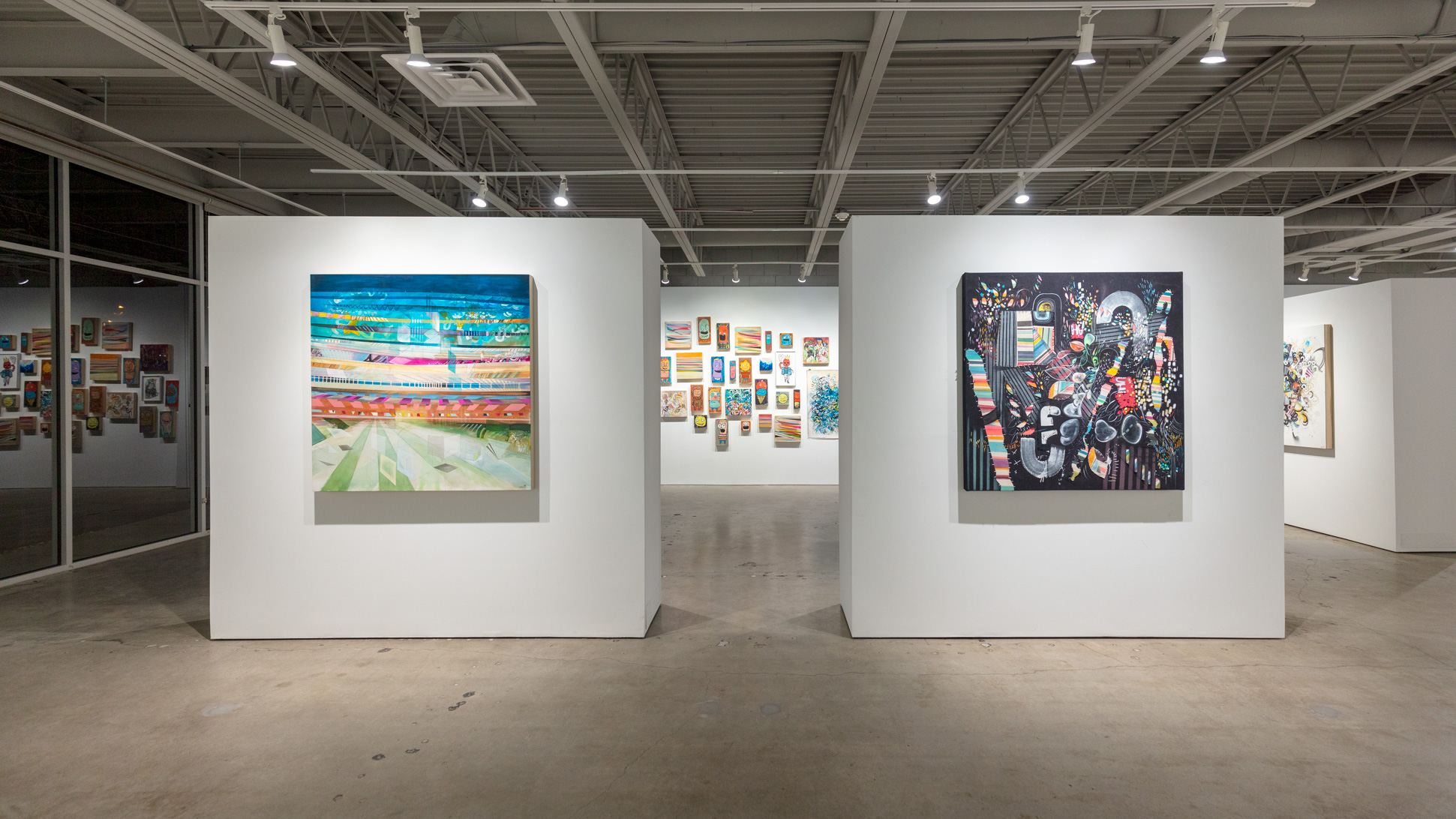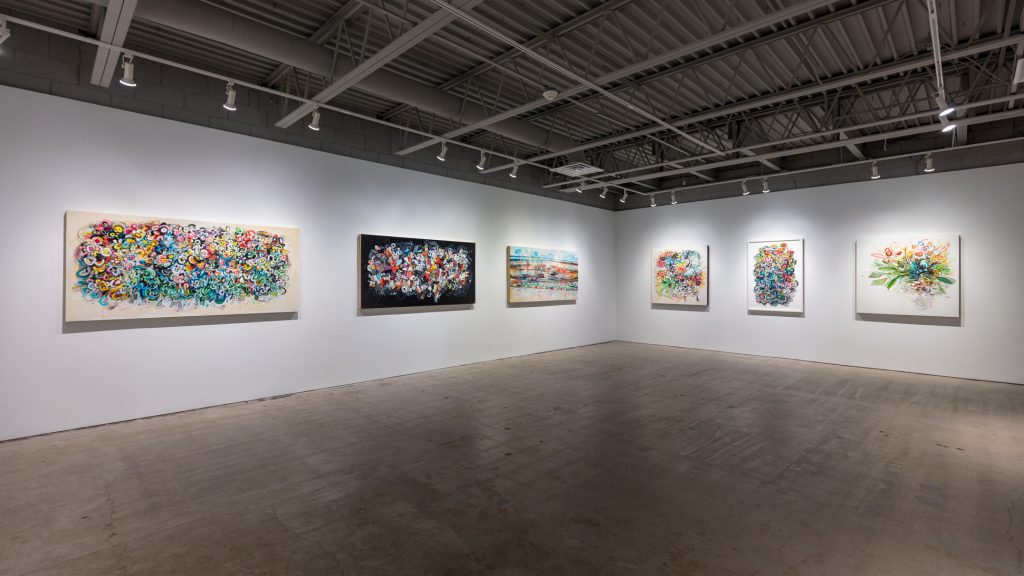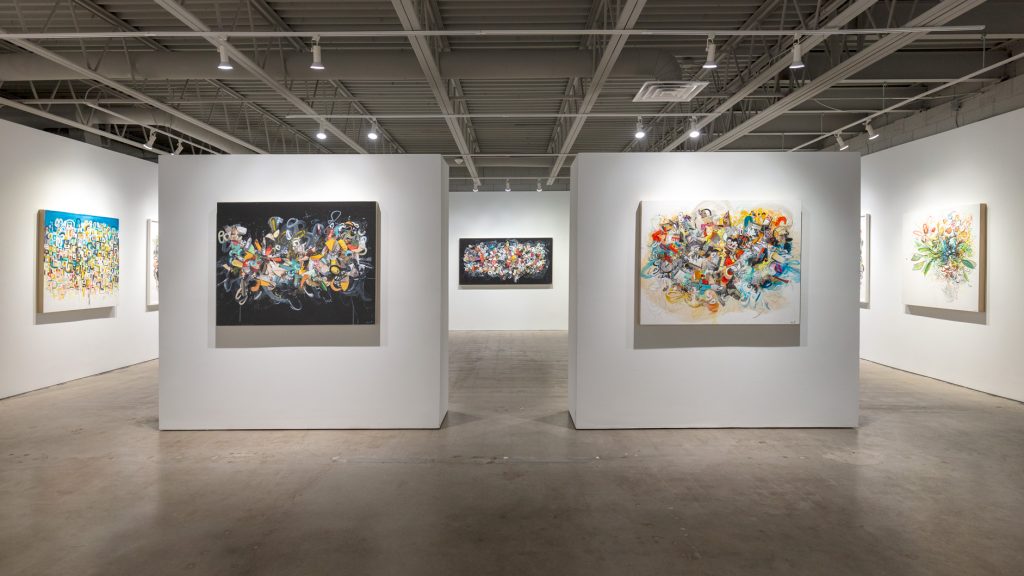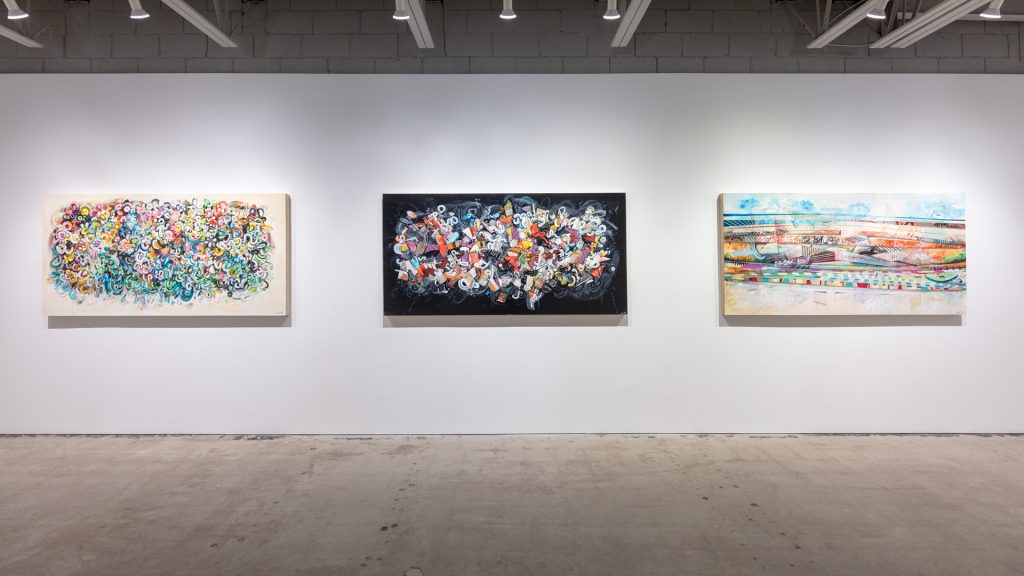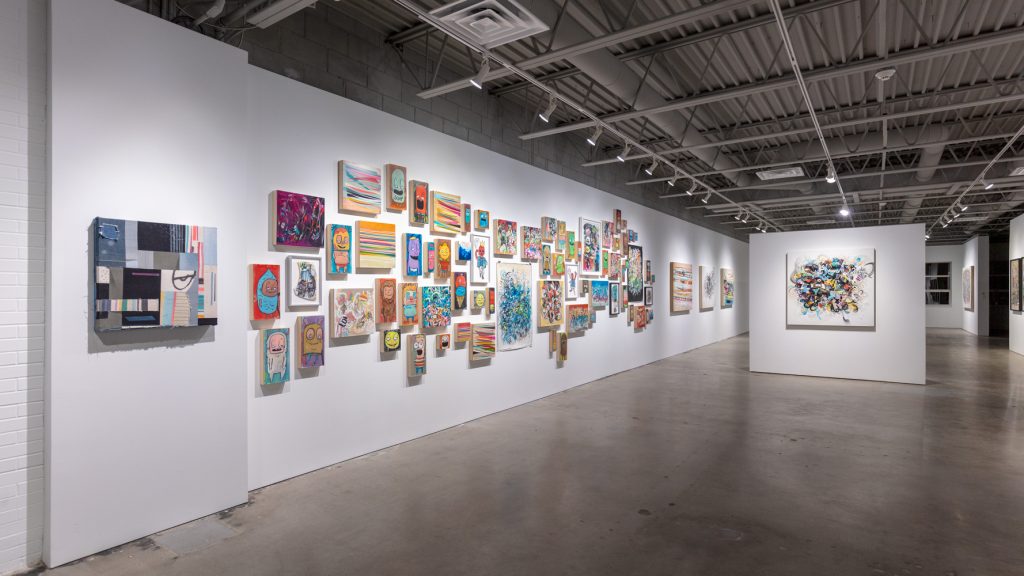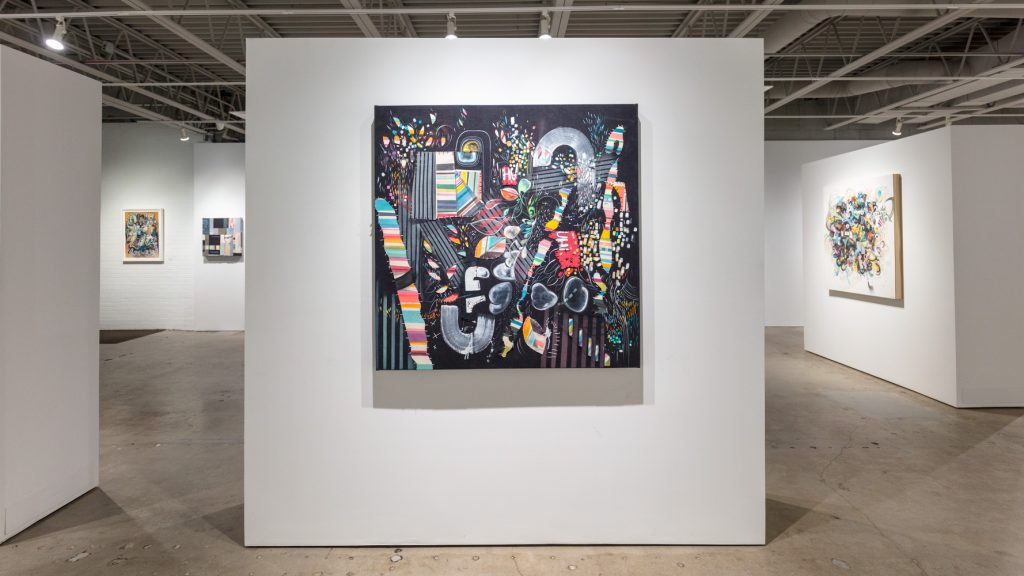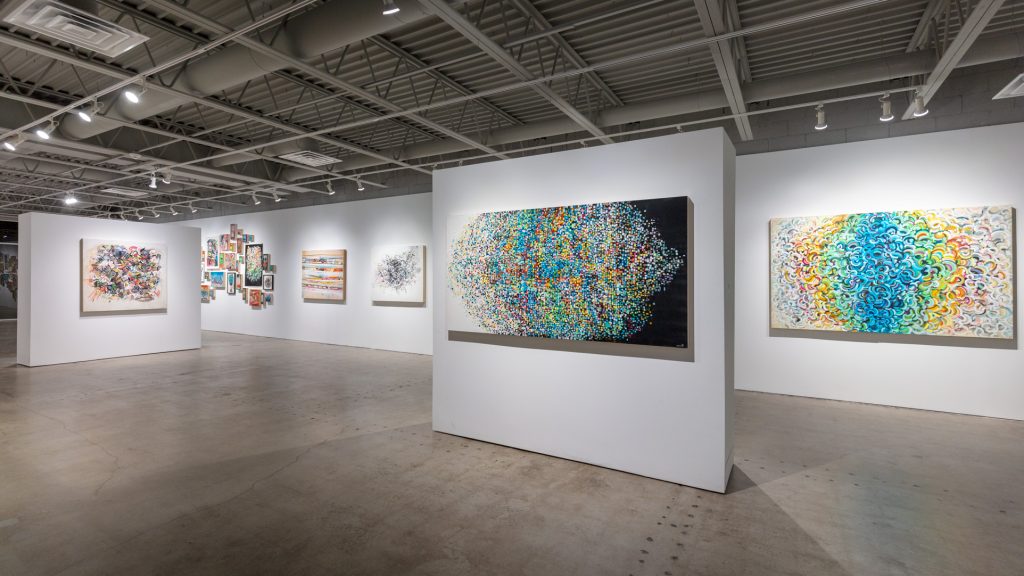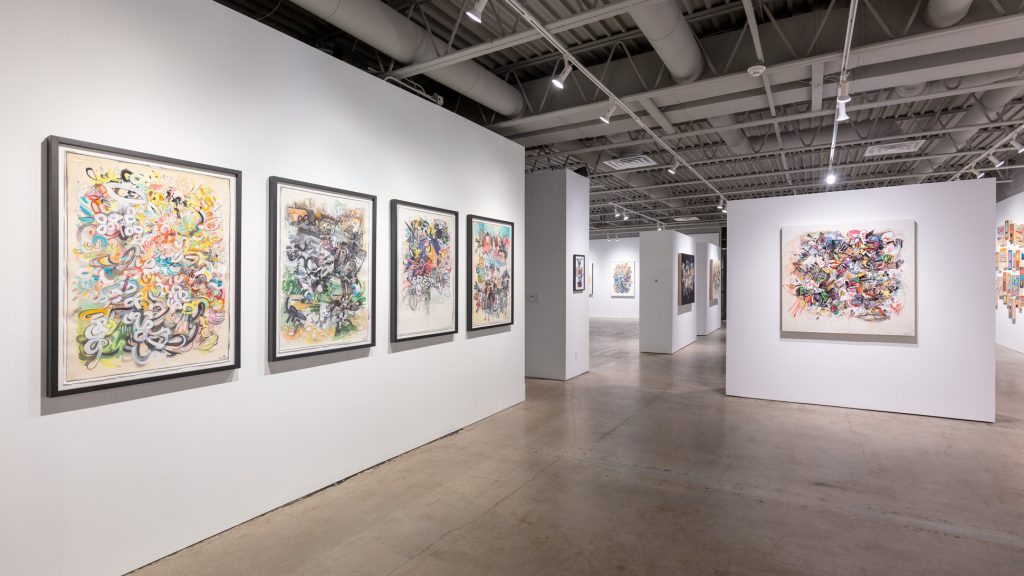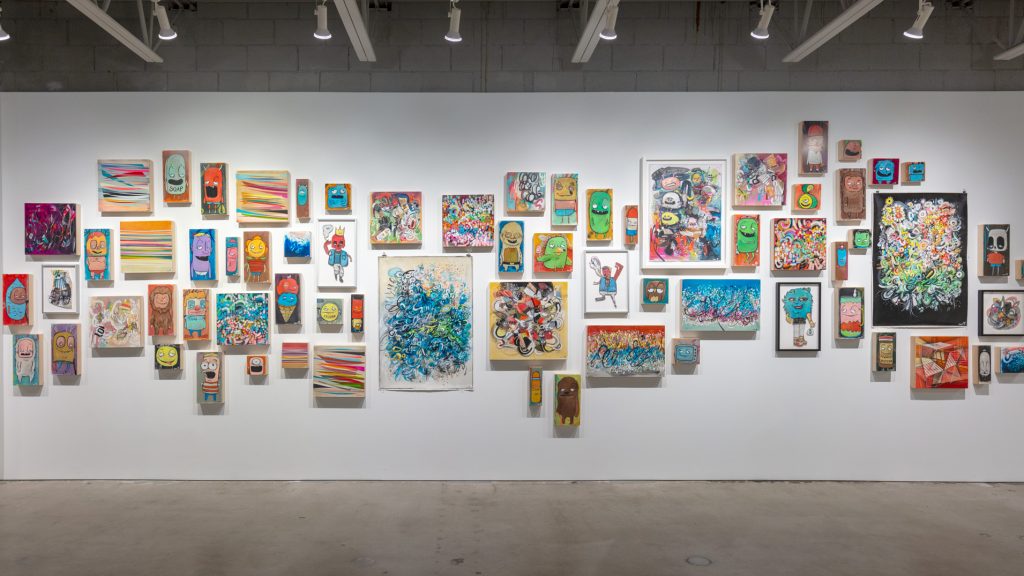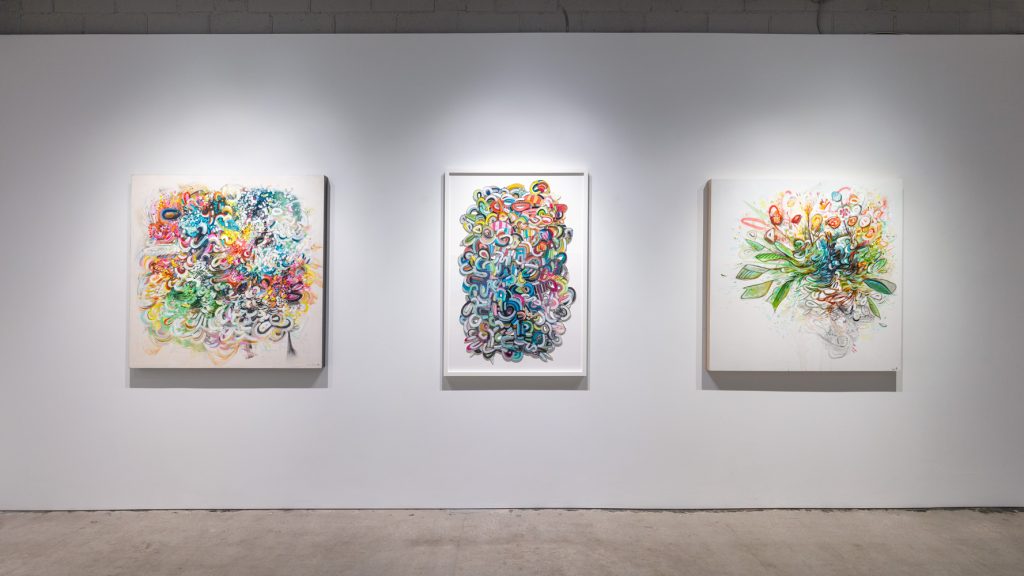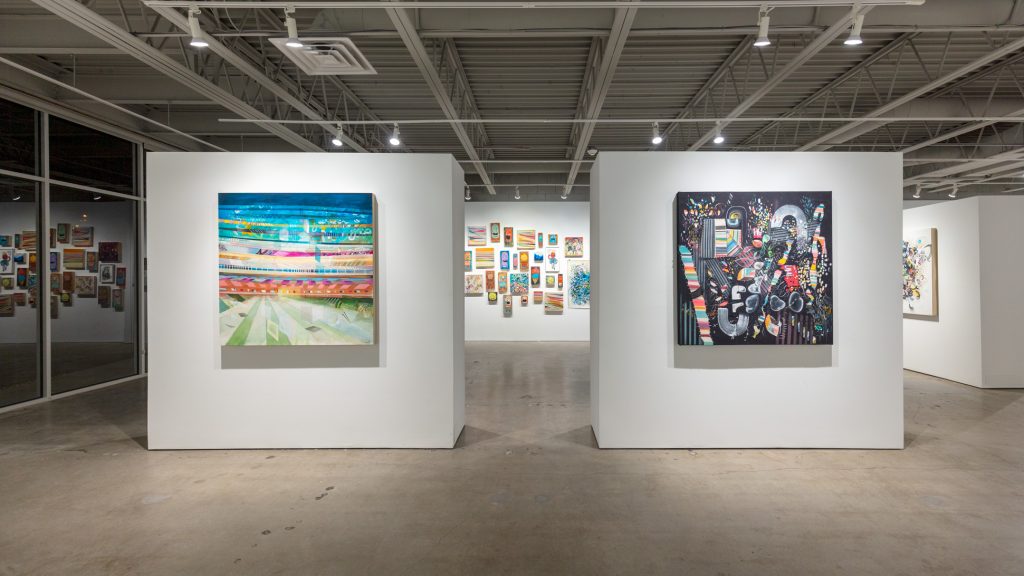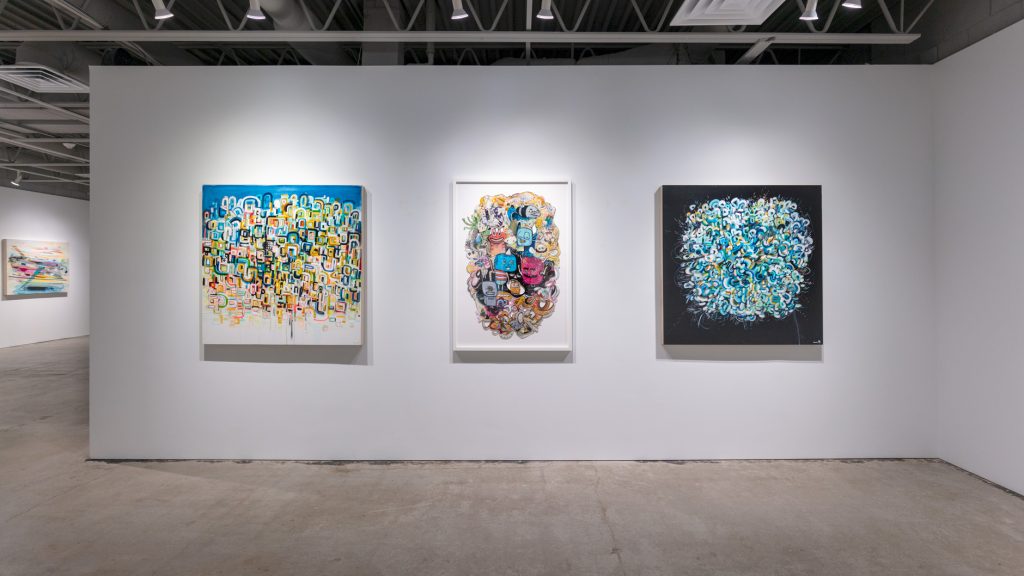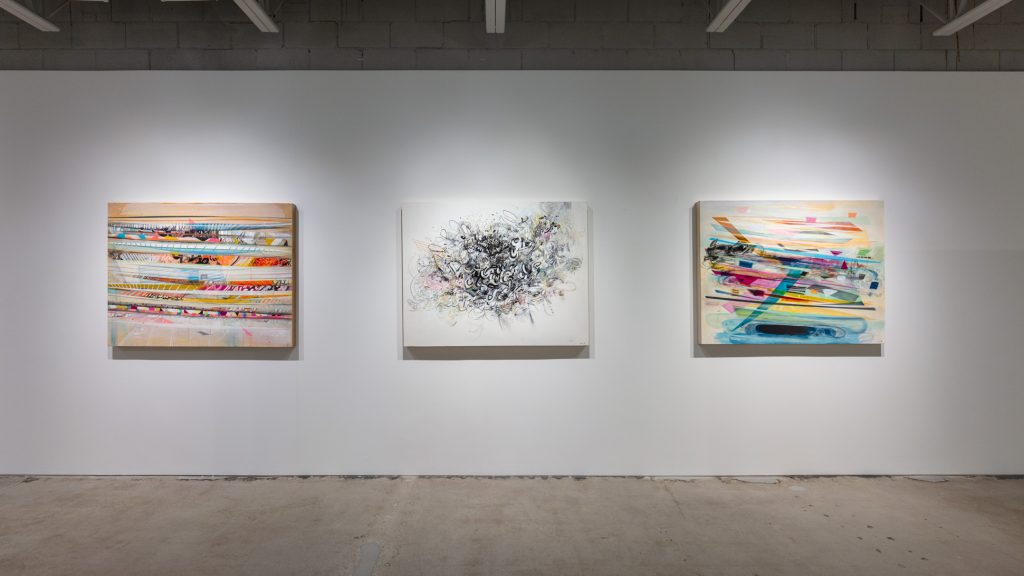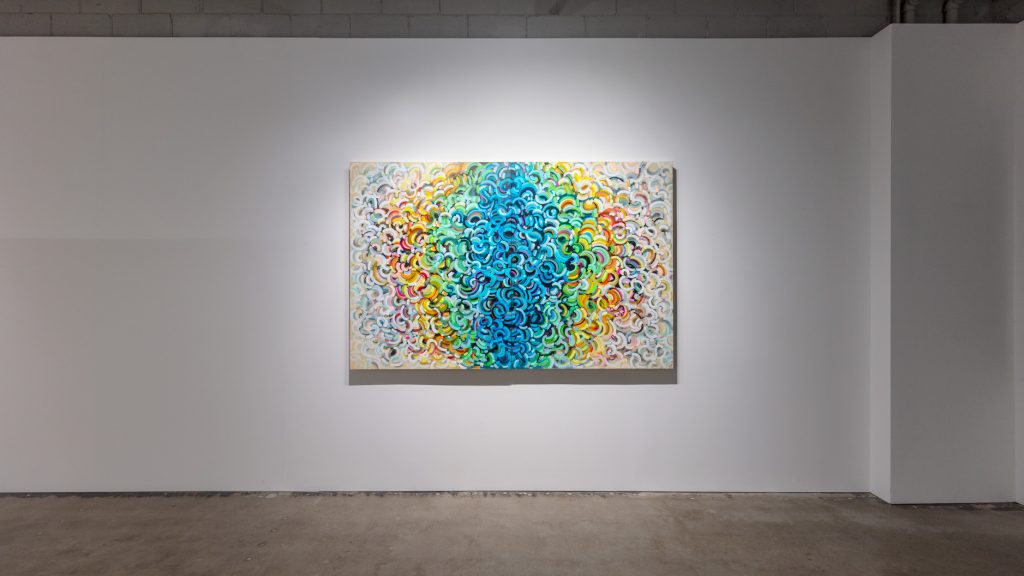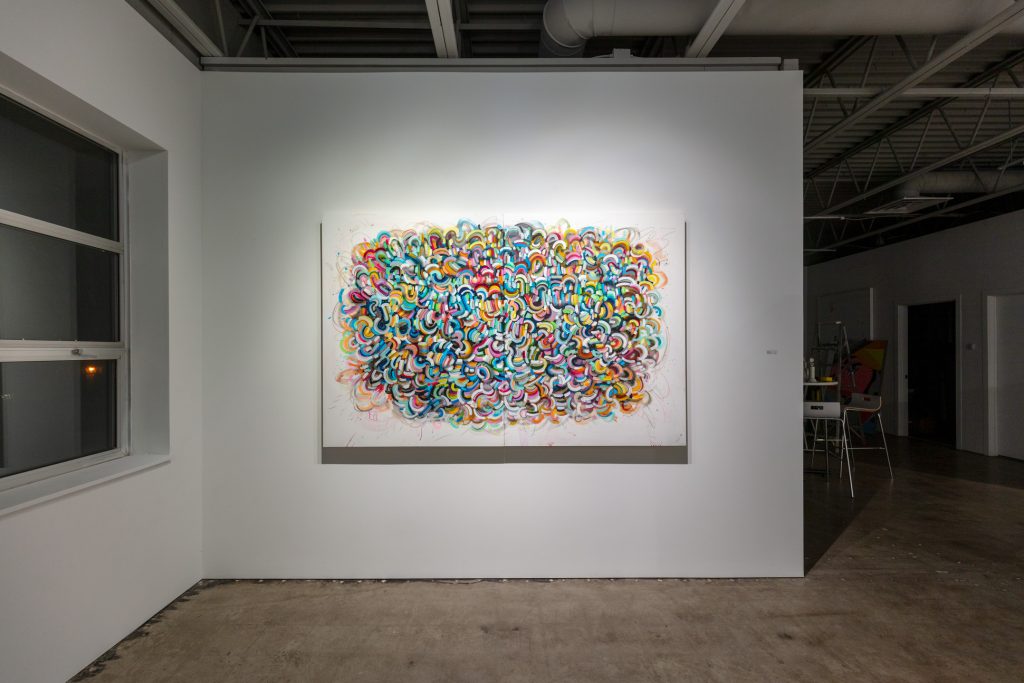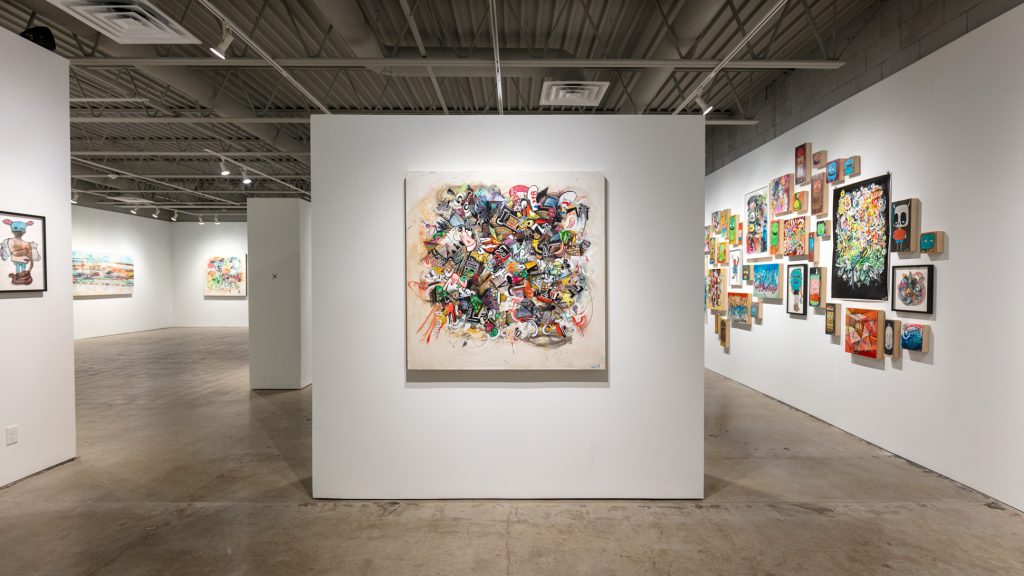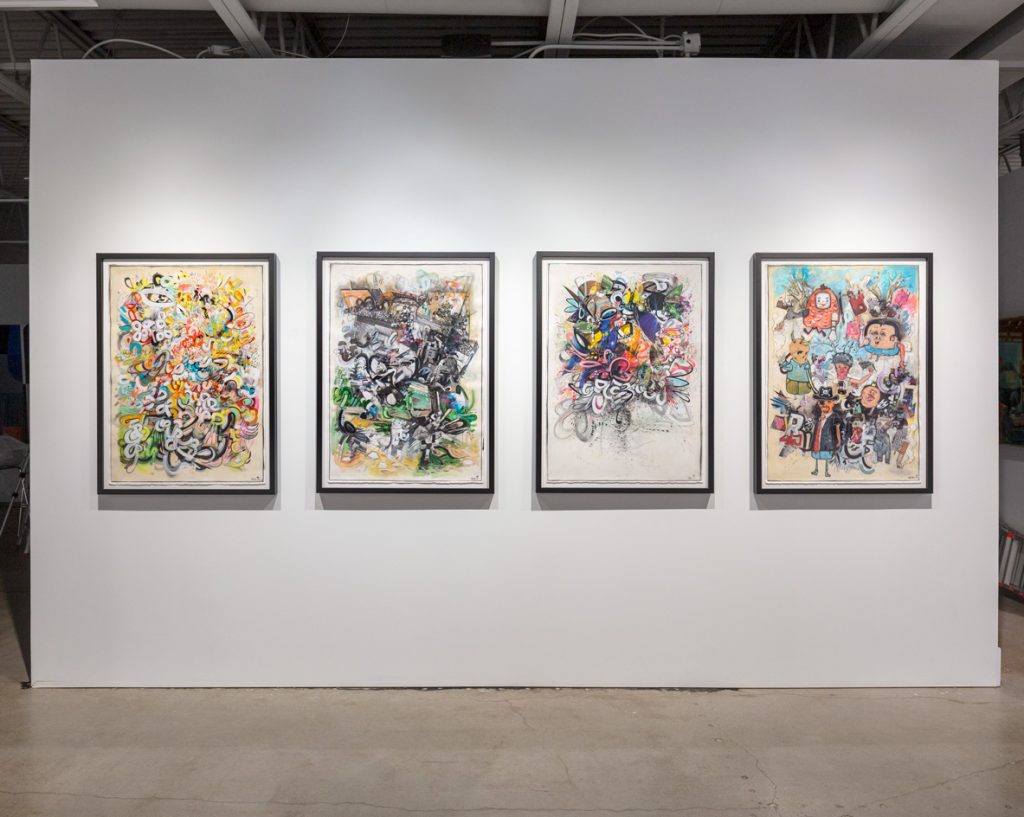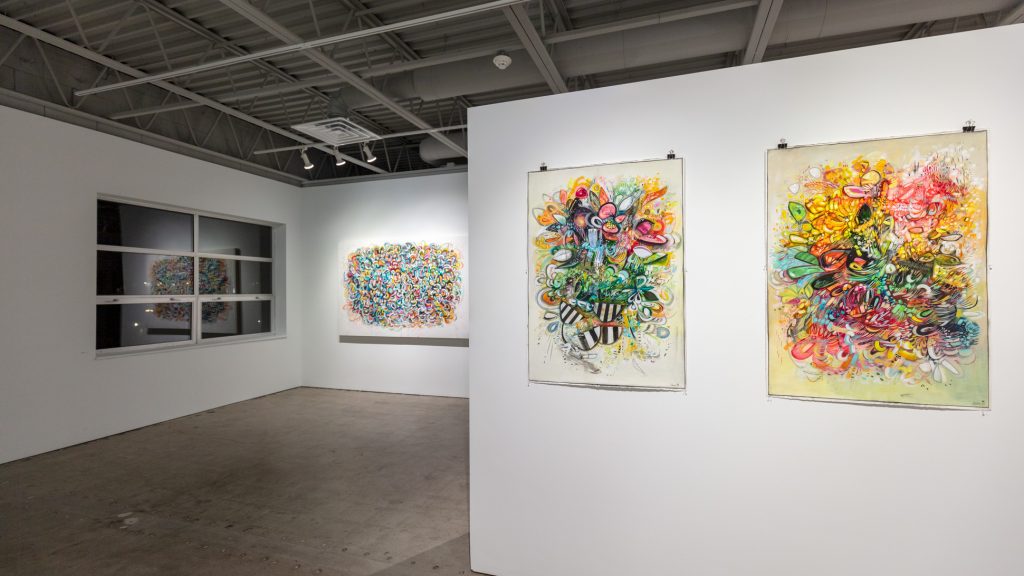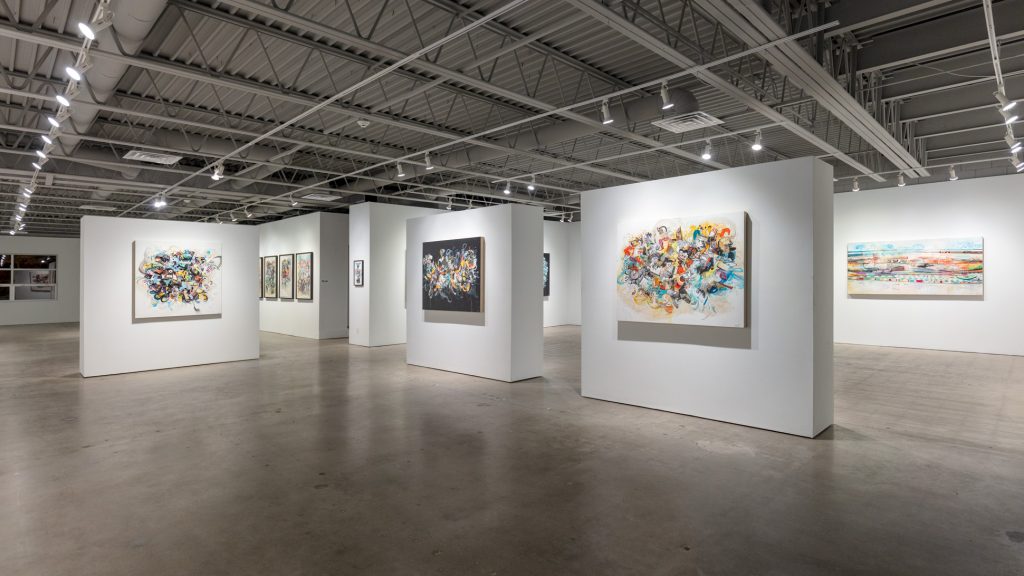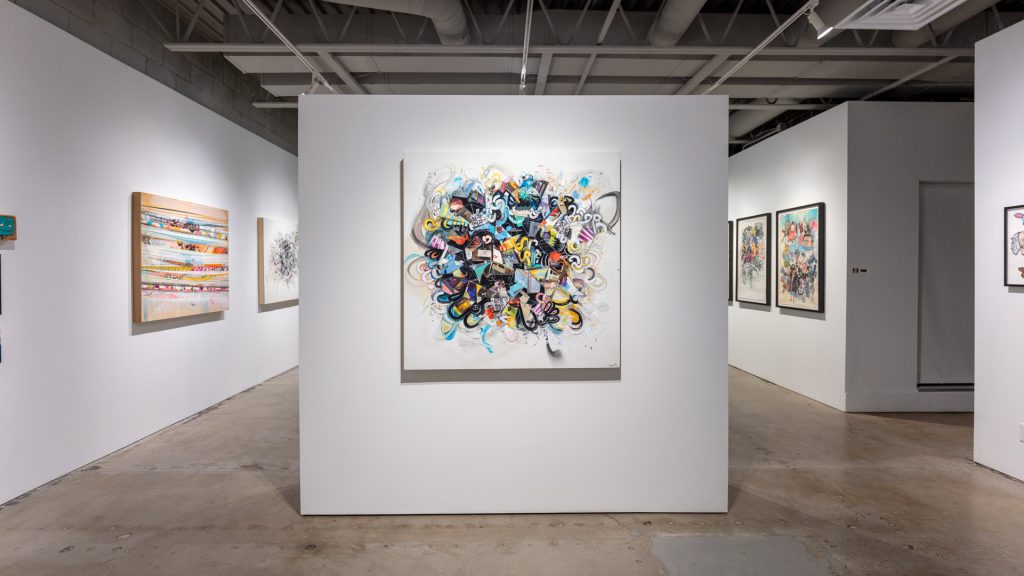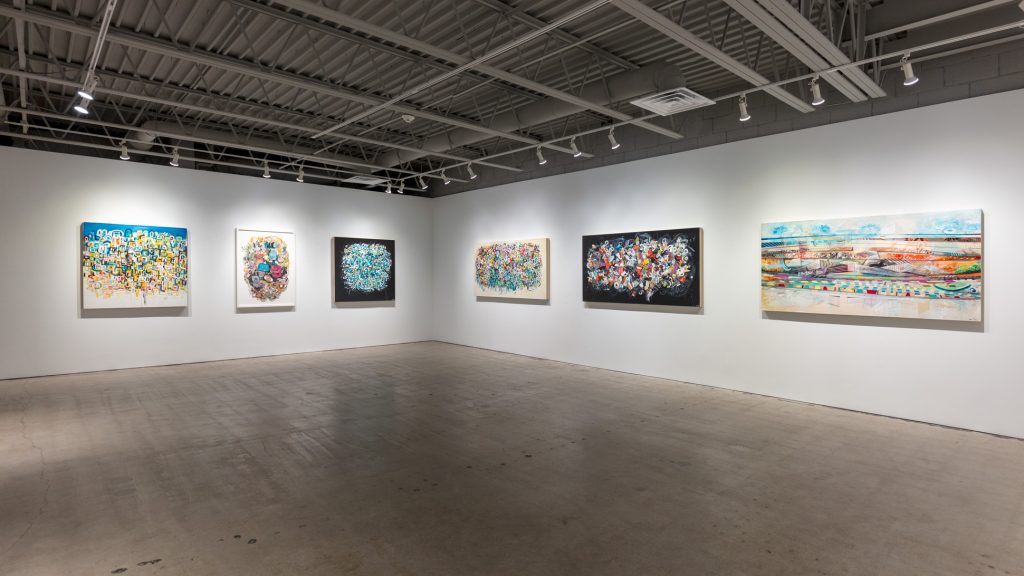TEXT BY MICHAELA MULLIN | VIEW IMAGES
Mixing Metaphors Never Looked So Good: The Ultrasounds of Chris Vance
At the beginning of each year, Chris Vance asks himself what, of the previous year, he wants to comment on. The new works in the exhibit, Sampled, are in response to thinking about controversies and conversations around the rise of AI and AI-produced art. For Vance, this relates back to the music of the 1980s, when groups were sampling in their songs, and a shift in how music was made began.
Vance decided to cut and recompose bits of images and articles from older magazines that influenced and helped him further is own art making. In doing so, he has created tornadoes of image, color, text, and remnants of his love for graffiti and street culture. Breaking rules is important to him, but controlled chaos is also his strength. And in these new mixed-media works, he is sampling and integrating his personal history with that of the art world; in doing so, he has created a “cycled” and renewed world.
This exhibit feels like reverie—like a large time capsule—exploded, sorted, and made future.
Take “Old School Mix on Tape” And “Little League Dream,” cut paper works that tantalize and “nostalgize” Vance’s childhood and other Gen Xers who grew up in the 80s. In the former work, tape-like loops in color, tangled like the cassette tapes of yesteryears do/did. The loops Vance creates here also recall three-dimensional letters falling, sight and sound of lyrics and notes.
The latter work is darker, dustier, as a softball field of activity, kicking up dirt. The black and white collaged pieces show up in a blur, figurative subjects in parts—legs and feet here, upper body there, a ball in midair somewhere between, etc. Subjects seem to be running bases, and the green swirls make grass at the forefront of the paper, while at the top, the stadium panels in perspective hold lights to shine on everything below, including a score board that has the sequence 1234567890.
In keeping with his looking-back-to-look-forward approach, Vance has brilliantly created room for a since-the-90s-social-taboo, offering viewers a smoking section— if only second-hand and only through representation. A partial face-swap is at the center of the collaged cut paper piece, “Little League in the 80s.” A photo bottom and drawn top make the expression of the coach pursed and furrowed whilst smoking a cigarette from between red lips. A mustache and neon pink blush accessorize this otherwise masculine-leaning character in mid-air. Appendages can be found in all proportions—small doll arm, enlarged block arm, photo collaged human leg, drawn foot.
And in “Truths 2,” a blue-vested, parachute-pants-wearing body with a skull for a head is walking toward the viewer, out of the paper, as it creates a small smoke storm in which we can see its eye. In both this and “Little League in the 80s,” the smoke appears as speech balloons, where nothing is being said. This too could be read as an interesting analysis of the 1980s—and how adults (be they parents, teachers, or team coaches) and children did or didn’t communicate.
“Connecting the Dots” imagines a big bang in space. Each small particle seems rendered as a snap hook, open. Discrete sections search for each other, with an intensity that belies a sometimes nonchalance toward connecting. But the snaps want to close with something entwined. The beautiful desperation is imaged as a Charles Schulz’ “pig pen” motion of this voluminous pile—and for the viewer it has summoned a type of map for which the eye searches for pieces of a puzzle. In contrast to this commotion, “All Caps” is bright and lights up with hook and loop, all cradling to find the cumulative and the rhythm. Its surface area is abuzz with vibration and the symmetrical and central placement of this cloud of color mesmerizes and calms.
When we follow a line of thought, such as “if … then,” we are in a conditional mood. And it is a grammatic and literary device that one may not expect to find in two-dimensional paintings. So, of course, Vance succeeds in doing just that. “Might Be” feels like an architectural rendering through a prism. Its horizontal slices, or bands, stretch and curve, eliciting an opening—a portal into the inside of the inside of an outside. Fragmentary sampling makes a visual hammock in which the viewer’s eye can swing below blue and white of Vance’s clouds. “Wish You Were Here,” however, feels ship-like, rendered through a prism in deep space. Perspective towards the distance ahead is made to point toward the kaleidoscopic, for having no horizon is a strange and unfamiliar sensation to earthlings.
“All Ways” and “Patterns” expose a grand truth about collaboration—when it’s right, and the ideas and perspectives in tandem don’t fight each other but give and take within a newly-made space, the result is greater than the sum of a single artist’s parts. Vance and photographer, Garrett Cornelison, came to work together on two pieces for the exhibit: “Patterns” stands out in its textile blocks making patchwork with no rigid tradition. Denim upon denim and stripes and dots create a texture one wants to move toward. At the top center, an expanding wave like a sonogram indicates movement through the fabric—as if it’s meant to house a body in motion. “All Ways” is looser, like vocal scatting. One can find growth (leaves), stitched fabric (mending), letters (language as communication), among the small arches in white, the diagonal and vertical lines like soft bars. Pixel dissipation edges the composition in candy corn nuggets that help bridge the idea and visualization of what solidity may or may not be.
And in never forgetting or foregoing his roots, Vance has four skate decks from his series “Skate or Die” in the show. From characters such as The Creature from the Black Lagoon to The Bride of Frankenstein, his signature creatures are, here, familiar faces attached to cultural cinematic moments of a generation. On small panels, his other critters are also on view. “Getting Hot” and “Hell Ya,” for instance, conjure days of tennis headbands (think: Bjorn Borg) and Bomb Pops, in all their red, white, and blue glory.
A gem on the salon wall is “Back and Forth,” a small-scale work that holds multitudes. It is a riveting amalgamation of Vance’s periods and styles. Being somehow busy while remaining simple; being funny yet not terribly loud, it incorporates his animals, line work, curlicue strokes and graffiti-like spray marks, and small dotting that verges on square pixelation. There are boxing gloves and gorilla nipples that edge the cut-paper as if the animal is backing off the page, challenging all the marks of the composition in front, below, and above it. A challenge to a match, and outside the ring, the audience members don’t just respond to their favorite champion fighters, they enjoy the skill and talent exhibited in every round.
Sampled will be on view through Saturday, April 6.
Exhibit Images
